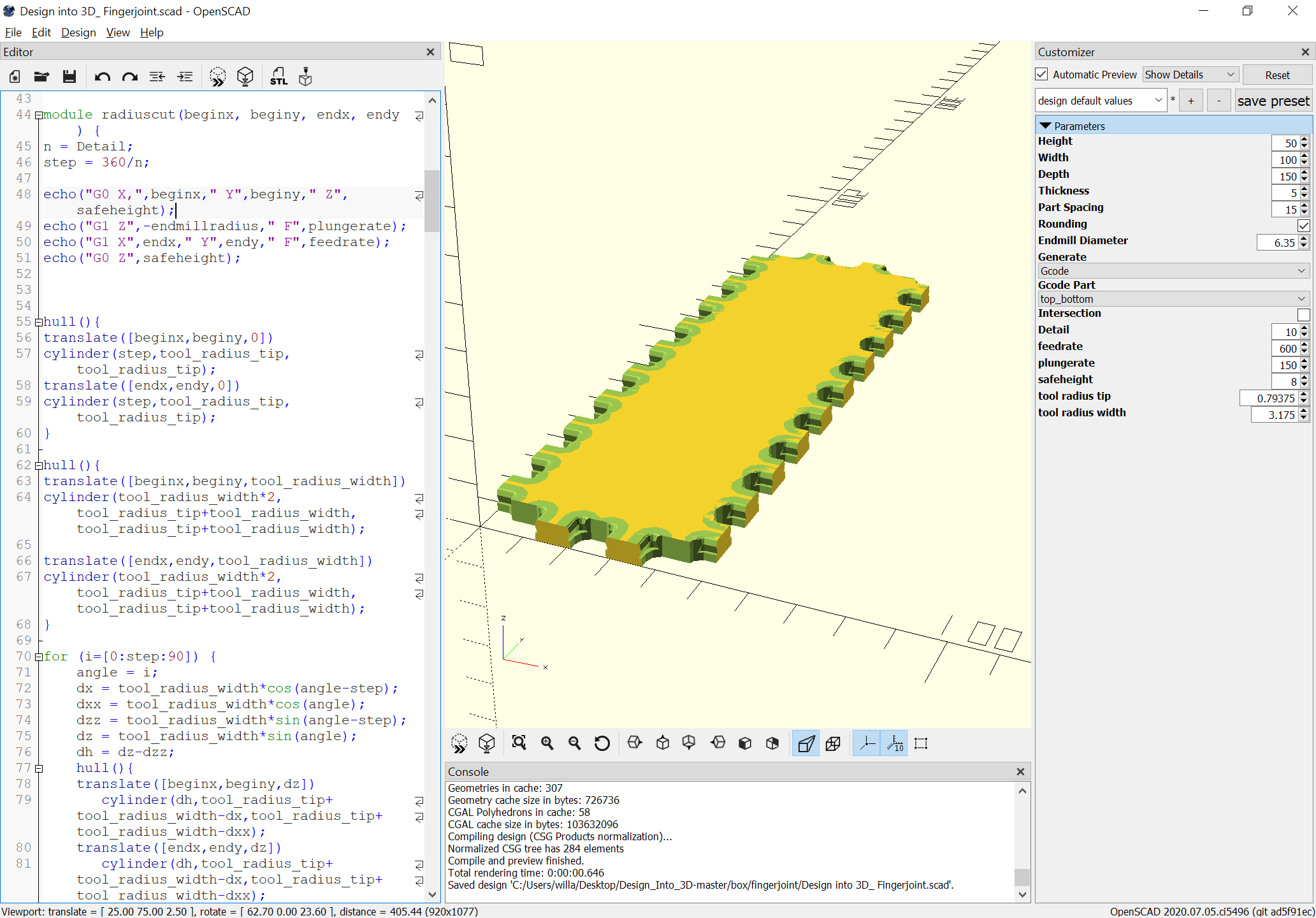

Integers are okay, as are fractional values whose denominator is a power of two. You should avoid step values that cannot be represented exactly as binary floating point numbers. They use colons : for separators rather than commas. They have 2 varieties:Īlthough enclosed in square brackets, they are not vectors. Ranges are used by for() loops and children().
Openscad echo upgrade#
You can upgrade old files using the following sed command: sed 's/\\/\\\\/g' non-escaped.scad > escaped.scad Example:Įcho("The quick brown fox \tjumps \"over\" the lazy dog.\rThe quick brown fox.\nThe \\lazy\\ dog.") ĮCHO: "The quick brown fox jumps "over" the lazy dog.ĮCHO: "The quick brown fox \tjumps \"over\" the lazy dog. Note: This behavior is new since OpenSCAD-2011.04.
Openscad echo code#

Statements such as if() will actually accept non-Boolean "variables, but most values are converted to 'true' in a Boolean context, the values that count as 'false' are: conditional operator '? :',Īnd generated by logical operators '!' (not), '&' (and), and '||' (or). Instead, you must use 'x != x' to test if x is nan.īooleans are variables with two states, typically denoted and denoted in OpenSCAD as true and false.īoolean variables are typically generated by conditional tests and are employed by conditional statement 'if()'. Although you can test if a variable 'x' has the undefined value using 'x = undef', you can't use 'x = 0/0' to test if x is Not A Number. The value 'nan' is the only OpenSCAD value that is not equal to any other value, including itself. You can define variables with these values by using: The constants 'inf' and 'nan' are not supported as numeric constants by OpenSCAD, even though you can compute numbers that are printed this way by 'echo'. Zero (0) and negative zero (-0) are treated as two distinct numbers by some of the math operations, and are printed differently by 'echo', although they compare as equal.
Openscad echo 64 Bit#
OpenSCAD has only a single kind of number, which is a 64 bit IEEE floating point number. In additional to decimal numerals, the following names for special numbers are defined: Numbers are the most important type of value in OpenSCAD, and they are written in the familiar decimal notation used in other languages. Values can be stored in variables, passed as function arguments, and returned as function results. Operator() operator() Ī value in OpenSCAD is either a Number (like 42), a Boolean (like true), a String (like "foo"), a Range (like ), a Vector (like ), or the Undefined value (undef).
Openscad echo free#
This script is a free format list of action statements. OpenSCAD is a 2D/ 3D and solid modeling program which is based on a Functional programming language used to create models that are previewed on the screen, and rendered into 3D mesh which allows the model to be exported in a variety of 2D/3D file formats.Ī script in the OpenSCAD language is used to create 2D or 3D models.


 0 kommentar(er)
0 kommentar(er)
